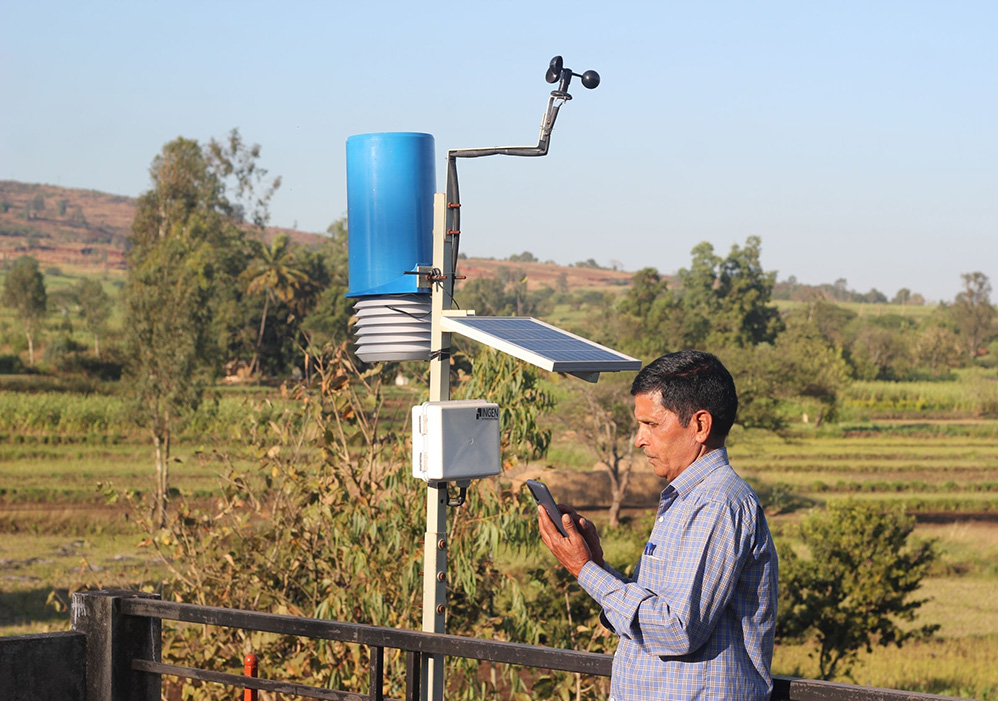In India, Agriculture, forestry, and fishing sector contributes around 20 percent (2020-21) to the Gross Value Added (GVA) of the country, but these sectors together support the livelihood of nearly 60 percent of the population. Traditionally, India adopted a supply-led approach to increase the flow of agricultural credit and the current policy and regulatory regime recognizes the importance of credit in boosting farmers’ incomes and in poverty alleviation.
Credit can help an average risk-averse smallholder farmer increase his willingness to take risks and invest in technologies that enhance yield. However, huge challenges persist in ensuring the flow of institutional credit to farmers. About 86% of the farmers in India belong to the small & marginal category (less than 2 ha) and more than 150 million such families in India are dependent mostly on hand-to-mouth, subsistence farming. Only a third of the total farmers can access formal credit. Over half of the smallholders are unable to access any of the formal sources at all. Thus, despite all the decades-long efforts, investments, and policy push, smallholder farmers remain dependent on informal sources of finance and are most vulnerable.
Challenges such as geographical inaccessibility, poor infrastructure, low literacy (financial & digital), lack of reliable farm level and financial historical data make credit assessment by the traditional financial institutions difficult. Owing to high cost of servicing and risks involved, the rigid, plain vanilla, one-size-fits-all kind of financial products offered by the traditional financial institutions are ill-suited to cater to the unique needs of the farmers particularly, smallholders.
Aiming to address these challenges, AgriFinTech sector has recently emerged as a key enabler for enhanced financial inclusion; last-mile reach; and efficiency by adopting an innovative, holistic, value chain-based perspective to agri lending. AgriFinTech sector draws synergies from the advancements in ICT and derives greater efficiency through a data-driven, tech-enabled, and digitally connected ecosystem-wide approach. Besides offering farmers (particularly, smallholders) timely access to adequate credit, the ecosystem approach helps the entire value chain operate at a higher equilibrium by offering complementary solutions like aggregation, market linkages, and advisory services.
Key factors behind the evolution of the AgriFinTech sector
According to industry estimates, AgriFinTech in India presents a US$ 600 billion (across various subsectors like agriculture, horticulture, and animal husbandry including poultry, dairy, fisheries & aquaculture). As the fintech revolution unfolded, the availability of smartphones in rural India was 36.5% in 2018, which increased to 61.8% in 2020 and 67.6 % in 2021. The rural internet user base in 2020 was 299 million but by 2025, rural India will likely have more internet users than urban India. Further, various schemes by the Central and State governments including Jan Dhan 3.0 along with high investment from the private sector are fostering the transition from cash to digital economy. Growing digital literacy among rural dwellers including farmers is a highly encouraging factor behind the rise of AgriFinTech sector.
Leveraging the “digitally-fuelled” growth, several AgriFinTech companies have already demonstrated that lending to farmers, FPOs and value chain players is profitable at scale along with a combination of smart data intervention, market linkages, partnerships and “Phygital” approach.
As an India’s agri-tech enterprise, we operate with the vision to de-bottleneck the agri value chain by playing the role of an ‘ecosystem enabler’ to ultimately, make markets work for the smallholder farmers in India. Samunnati is currently present in more than 100 agri value chains spread over 22 states in India and has powered over $1Bn of gross transaction value (GTV) so far. We touch nearly 6 million farmers through our network of 1500 Farmer Collectives, and we aim to impact 1 in every 4 farming households through our network by 2027. Further, we nurture start-ups and entrepreneurs through Samunnati Foundation to foster greater positive socio-economic impacts on the livelihoods of the farmers.
Though in its nascent stage, the AgriFinTech sector has already demonstrated positive social and environmental impacts and contributed significantly toward the UN Sustainable Development Goals (SDGs) such as no poverty, decent work and economic growth, responsible consumption and production, gender equality, zero hunger, reduced inequalities and peace, justice, and strong institutions.
A conducive and long-term policy, an efficient regulatory framework, and collaboration among the ecosystem stakeholders together can enhance financial inclusion particularly, for the smallholder farmers in India. Synergistic partnerships between a wide array of stakeholders in the agri-food value chain such as Government, traditional financial institutions (commercial banks), Development Finance Institutions (DFIs), investors (venture capitalists, HNI, private equity firms), technology & business incubators, food companies, retailers, start-up accelerators, research institutions and ag-tech players are already evolving to develop innovative, scale-neutral, tailor-made solutions specifically to suit the smallholders.
The agile, responsive, and digitally driven AgriFinTech sector is fast evolving as a game changer and has the potential to transform livelihoods of millions of smallholder farmers in India in the near future.

Written by
Raghavan Sampathkumar, Head – Policy Advocacy & External Affairs, Samunnati



